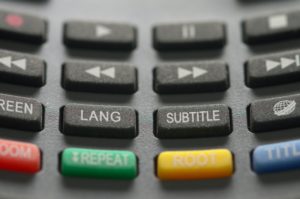Can I learn Korean and Chinese at the same time? The short answer is yes. While it’s quite difficult, it’s not impossible. Any person can learn to speak two different languages at the same time. While we recommend taking your foreign languages one at a time, we understand that reaching fluency in a short time can be an urgent need. Still, if you’re up for the challenge of learning both Korean and Chinese simultaneously.
Why It’s Hard to Learn Two Languages at the Same Time
You can only learn a new language so fast. That’s because your brain needs time to build new memories. You also have to work hard to conquer the “Forgetting Curve“. The forgetting curve is the natural process you go through to forget inessential information.
Every day, you experiment a TON of new information. But you forget most of it. You see, your brain constantly erases memories it doesn’t think you need. It’s why you struggle to remember what movies you watched over the weekend or what that stranger on the bus next to you wore this morning. That’s called synaptic pruning. Your brain is extremely efficient. If you don’t use it, you lose it.
As you learn a language, you’re constantly trying to push new memories into long-term memory. You’re trying to make that information essential. You can apply all the tips and tricks you know, but at the end of the day, your brain still has to build those memories. And that takes time.
Learning Multiple Languages at Once Slows You down
If you decide to learn two languages at the same time, one of two things may happen. You’ll either have to double the amount of time you study. Or, you have to accept that you’ll advance in each language half as quickly as you would otherwise. Either way, you’ll need more time to reach fluency.
Learning Similiar Languages Simultaneously Can Be Confusing
It’s also important to note that if you choose two similar languages, you may find yourself in a more difficult position. Often, these languages have overlapping vocabularies and grammatical structures. Distinguishing them can be challenging for any learner. If you decide to learn two languages at the same time, make sure they’re very different from each other. This can make it a much easier experience for you.
Ultimately, learning two similar languages such as Korean and Chinese presents the same problems. Both languages influenced each other over the years, so the similarities in structure and vocabulary will be hard to distinguish. If you’re still determined to learn these two languages at the same time, then read on. We’re going to compare them to give you a complete overview of just how similar these languages are. And we’ll give you some tips on how to conquer this impressive feat.

Chinese and Korean Are Difficult Languages to Learn
Both of these languages are considered difficult to learn for English speakers. And learning them at the same time won’t make the process easier. The Foreign Service Institute (FSI) rates both Chinese and Korean as Category 5 languages. That’s the highest difficulty.
In other words, they estimate that it would take 88 weeks (2200 hours) to reach fluency in each!
While how long it takes for you to learn a language depends on a lot of variables, mastering Korean and Chinese generally takes longer than most other languages.
It’s also important to mention that both languages have distinct dialects. Chinese consists of seven different dialects: Mandarin, Wu, Gan, Xiang, Min, Hakka, and Yue (Cantonese). There are only two main dialects of Korean, divided by the two parts of the country: North and South. South Koreans speak Hanguego, while North Korean people speak Chosono.
There are other regional accents as well. Foreign language learners usually learn the most common dialects of these languages: Mandarin Chinese and Hanguego Korean.
Are Chinese and Korean Mutually Intelligible?
While the similarities between the two languages are noticeable, Chinese and Korean aren’t mutually intelligible. Korean and Chinese people couldn’t understand each other if they only used their native language in a conversation. That’s because they’re from different language families. Mandarin Chinese is Sino-Tibetan, whereas Korean is Altaic.
In fact, different dialects of Chinese aren’t intelligible to each other either. At best, people from different areas who speak those different dialects can probably only understand a few stray words in a casual conversation.
On the other hand, both languages have similar written characters. Since the Hangul alphabet was created to break away from the use of Chinese letters, their system is very similar. Some Korean numbers are also Sino-Korean, meaning that they derive from Chinese characters.
Similar Chinese and Korean Words
There are some words that are extremely similar in Korean and Chinese. This is because Korean used loanwords from Chinese as it developed. The proximity between the two countries helped organic vocabulary exchange.
Here are a few examples of words that are similar in both languages:
DINOSAUR
Korean: 공룡 (gonglyong) Chinese: 恐龙 (kǒnglóng) |
SKIN
Korean: 피부 (pibu) Chinese: 皮肤 (pífū) |
MARKET
Korean: 시장 (sijang) Chinese: 市场 (shìchǎng) |
COURAGE
Korean: 용기 (yong-gi) Chinese: 勇气 (yǒngqì) |
CONCERN
Korean: 관심 (gwansim) Chinese: 關心 (Guānx) |
VICTORY
Korean: 승리 (seungli) Chinese: 胜利 (shènglì) |
How to Learn Chinese and Korean at the Same Time
If the similarity of the two languages doesn’t scare you, there are a few tricks that can help you learn these two languages simultaneously.
Never Overlap Lessons
Scheduling language learning sessions right after each other can be detrimental to your studies. Jumping back and forth between the two can be even more so. Take some rest between your lessons. Let your brain rewire itself before you jump into it again. Perhaps schedule one day for Korean and another day for Chinese, just to be safe.
Use Different Language Learning Materials
If you’re learning Chinese from a book, try learning Korean from videos. If Korean music helps your vocabulary, try a Chinese language learning app. Separating your language learning efforts can help you study them at the same time more effectively.
Try Laddering
Ever wonder how polyglots can learn dozens of languages at the same time? They use a method called laddering. This means that they focus on one language heavily until they feel comfortable to move on to the next. And while their main focus is on only one language, they review the rest. You can do this with Korean and Chinese too. Learn one of them until you reach the intermediate level, and then start the next. This delay in proficiency can be very useful when learning two difficult languages.
Benefits of Learning Two Languages at Once
Learning a foreign language has many benefits. A wider cultural perspective, more career prospects, and improved brain health are just a few advantages to name. Reaching fluency in any language will unlock these bilingual benefits. Still, it takes time. Just because you’re learning multiple languages as one doesn’t necessarily mean you’ll supercharge your language learning benefits. In fact, you could sabotage them.
Motivation and goal-setting are two pillars of language learning success. However, when you learn multiple languages at once, you slow down progress in both. Your wins will spread out over two languages instead. If you choose to learn Korean and Chinese at the same time, then it’s important to keep that in mind when evaluating your goals and managing your workload. Failing to do that puts you at the risk for language learning burnout.
The Best App to Learn Chinese and Korean Simultaneously
Ultimately, you can learn both languages at the same time. But you need the best language learning methods to succeed. You need scientifically proven language learning strategies like comprehensible input and spaced repetition. These key methodologies in language learning can help you rapidly reach fluency in Korean and Chinese. And we built OptiLingo off those exact systems to ensure you can learn any language fast!
OptiLingo’s language learning app presents high-frequency phrases in a stress-free environment. You can learn at your own pace from anywhere in the world. No more failed attempts or false starts. With OptiLingo, you’ll learn to speak like a local thanks to its cutting-edge language learning methods. So, if you’re ready to learn Chinese and Korean at the same time, it’s time to discover how much easier language learning could be. Try OptiLingo FREE today!








